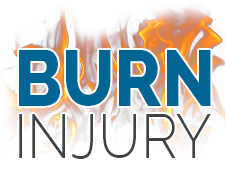Occupational Therapy
Occupational therapy for burn patients can help patients reacquire the skills needed to perform daily tasks independently. Occupational therapy is usually combined with physical therapy and sometimes medication in order to alleviate pain and allow patients that have suffered from severe burns to relearn basic physical functions in a safe and monitored environment. Burn patients often suffer from emotional distress as well as physical impairments, and occupational therapy allows patients an emotional outlet, as there are psychotherapy aspects to the rehabilitation programs.
Occupational Therapy for Burn Recovery
When the burn patient has been declared medically stable, physicians will encourage the patient to begin working with an occupational therapist and physical therapist as soon as possible. Depending on the medical facility and particular case, there may be one therapist that takes responsibility for all aspects of rehabilitation, or several therapists that work closely together. During early stages of rehabilitation, patients will be shown exercises to do that will prevent a loss of range of motion.
Physical therapy
Physical therapy begins with gentle exercises. The therapist may design splints or prescribe compression wraps that will help reduce scarring or skin contractures from moving skin that has been burned as it heals. Skin grafts can increase the risk of tightened skin, and splints may help prevent this skin from tearing during physical therapy sessions.
Rehabilitation Sessions
Occupational therapists are experts at helping patients to learn the skills needed to bathe, dress, groom, and cook after suffering from severe burns. In some cases, patients are severely disabled from the burns. Occupational therapists can provide guidance and advice for patients that may have to utilize alternative techniques to accomplish daily tasks.
Emotional Counseling
The patient’s emotional and psychological state have a tremendous impact on the effectiveness of recovery, so occupational therapists often provide counseling services for burn patients. If the patient is not enthusiastic about participating in recovery, efforts at physical therapy may prove unsuccessful. Emotional counseling can help patients to vent about frustrations and can help patients to avoid development of emotional disorders that may hinder progress.
Occupational Therapy at Home
Physical and emotional healing may continue well after discharge from the medical facility. Patients are encouraged to continue practicing exercises and techniques taught during occupational therapy sessions. Outpatient programs may assist patients in continuing to improve skills needed for independent living, and can help patients prepare to return to work or school. Return visits to the medical facility for therapy sessions can also allow physicians to monitor a patient’s progress and recovery.
Sources:
“Burn Injuries Program.” UC San Diego Health System. Regents of the University of California, n.d. Web. 30 Dec 2013. <http://health.ucsd.edu/specialties/rehab/specialty-programs/Pages/burn-injuries-program.asp
Proctor, Fiona. “Rehabilitation of the Burn Patient.” Indian Journal of Plastic Surgery : Official Publication of the Association of Plastic Surgeons of India. 43.August (2010): 101-113. Web. 30 Dec. 2013. <http://www.ncbi.nlm.nih.gov/pmc/articles/PMC3038404/>.
“What is Occupational Therapy?” American Occupational Therapy Association. American Occupational Therapy Association, n.d. Web. 30 Dec 2013. <http://www.aota.org/About-Occupational-Therapy.asp













